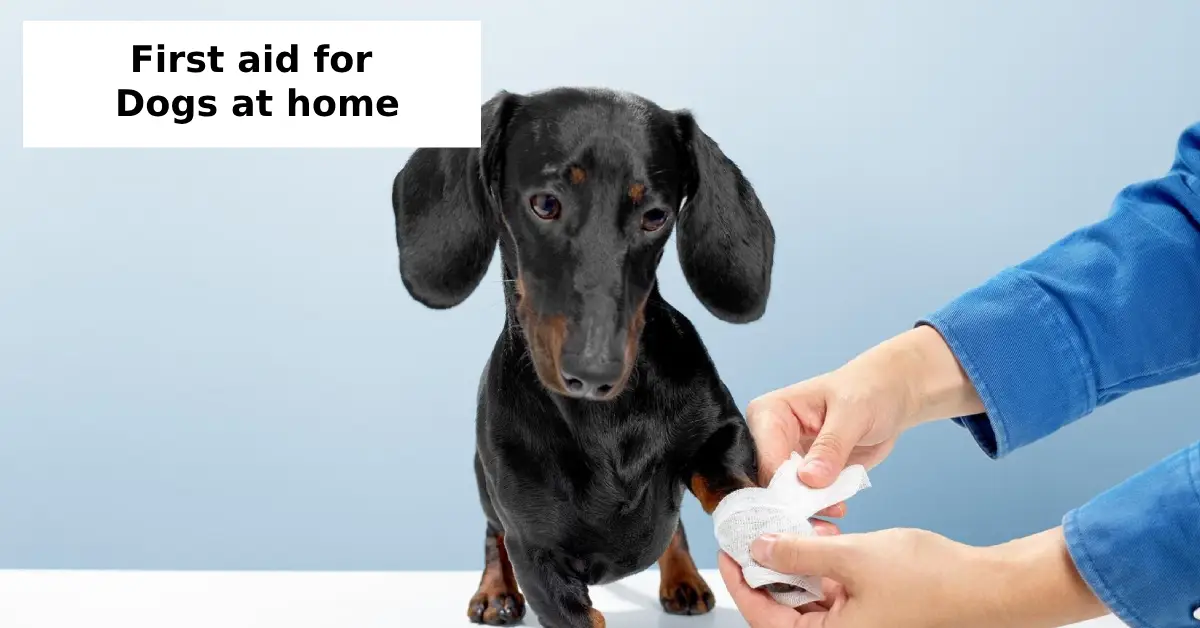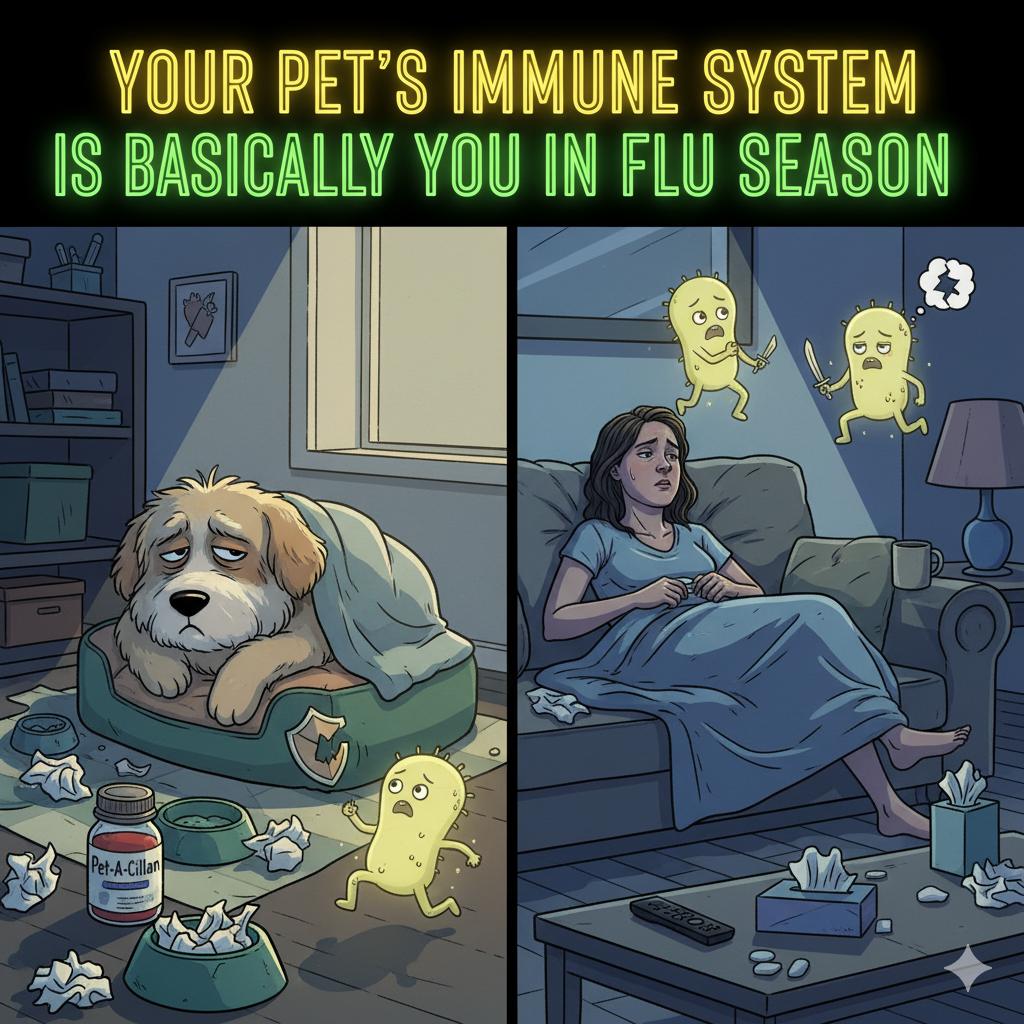Being a responsible dog owner means being prepared for the unexpected. Whether it’s a minor cut, allergic reaction, or a more serious injury, having a first aid for dogs at home can make all the difference. From bandages to medications, building your own DIY pet first aid kit ensures you’re ready to provide care when your furry friend needs it most.
In this expert-backed guide, we’ll cover what to include in a dog first aid kit, provide a pet first aid kit checklist, and explain how pet parents in suburban and rural areas can prepare for emergencies. Whether you’re a first-time dog owner or a seasoned pet lover, this guide is for you.
Why a Dog First Aid Kit is Essential
Dogs are naturally curious, and accidents can happen—whether at home, on walks, or during travel. For dog owners in disaster-prone U.S. regions like California or Florida, having a dog emergency kit is critical. Emergency services may be delayed, and vet clinics might be inaccessible.
Having a homemade dog first aid kit helps you:
- Treat injuries immediately
- Reduce your pet’s pain or discomfort
- Prevent infections
- Buy critical time before reaching a vet
Preparedness isn’t just for human emergencies—it’s vital for pets too.
Vet-Approved Dog First Aid Tips
Before assembling your kit, understand this important point: A first aid kit is not a substitute for veterinary care. It’s a temporary measure until professional help is available.
Follow these vet-approved dog first aid tips:
- Know your dog’s vital signs: heart rate, temperature, respiration
- Learn CPR for dogs through reputable sources like the Red Cross
- Save your vet’s contact info and the nearest 24-hour emergency clinic
- Update your first aid kit every 3–6 months
Veterinary students and pet care trainees can also use this kit as part of their learning and practice.
Pet First Aid Kit Checklist
Here is a complete pet first aid kit checklist with first aid supplies for dogs you should include:
Basic Medical Supplies:
- Sterile gauze pads (3×3 and 4×4 inch)
- Self-adhesive bandages (non-stick)
- Adhesive tape (vet wrap or cohesive bandages)
- Cotton swabs and cotton balls
- Blunt-end scissors
- Tweezers (for removing ticks or splinters)
- Digital thermometer (dog-specific, not shared with humans)
- Ice pack (instant or freezer type)
- Saline solution (for wound and eye flushing)
Medications (Consult Your Vet First):
- Hydrogen peroxide (3%) — to induce vomiting in certain emergencies (only under vet advice)
- Antiseptic wipes or solution (chlorhexidine or betadine)
- Triple antibiotic ointment (vet-approved)
- Benadryl (Diphenhydramine) – for allergic reactions (dosage must be vet-approved)
- Styptic powder or cornstarch (to stop minor bleeding)
Tools & Identification:
- Muzzle (injured dogs may bite)
- Spare leash and collar
- Emergency blanket
- Flashlight and spare batteries
- Notepad and pen for logging symptoms or instructions
- Waterproof case for medical records and microchip info
This checklist is great for DIY-focused pet lovers and emergency preparedness enthusiasts with pets.
Additional Dog Emergency Kit Essentials
Besides the basics, your dog emergency kit essentials should include:
- Your dog’s prescription medications
- Flea and tick preventatives
- Electrolyte solution (like Pedialyte) for dehydration
- Copies of vaccination records
- Your dog’s recent photo (in case they go missing)
This version of the kit is ideal for owners of elderly or health-sensitive dogs who may need more regular care.
Best Dog First Aid Products USA
If you’re not into DIY, several ready-made kits are available on the market. Some best dog first aid products USA pet owners love include:
- Adventure Medical Kits Workin’ Dog – great for active and working dogs
- RC Pet First Aid Kit – portable and travel-friendly
- Kurgo Pet First Aid Kit – includes a useful guidebook and multi-use supplies
These are especially useful for U.S. pet bloggers and influencers recommending pet safety products to their audiences.
How to Treat Dog Injury at Home
While your first aid kit can’t replace a vet, knowing how to treat dog injury at home for minor wounds is essential:
- Control bleeding: Use a clean gauze pad and apply pressure.
- Clean the wound: Flush with saline solution, never alcohol.
- Apply ointment: Use a vet-approved antibiotic cream.
- Bandage properly: Avoid wrapping too tightly—check circulation.
- Watch for infection: Swelling, pus, or redness are red flags.
If the wound doesn’t improve within 24 hours, seek veterinary care.
Also, don’t forget routine care like Dog Dental Health to prevent future health issues.
Creating a DIY Pet First Aid Kit on a Budget
Creating a DIY pet first aid kit is affordable and easy. Use a small plastic toolbox or waterproof bag to organize items. Label each section (e.g., medications, tools, wound care) for quick access.
Pet safety-conscious families often store one kit in the car and another at home. You can even involve kids in the process to raise awareness and responsibility.
When to Use Your First Aid Kit
Your first aid for dogs at home can be used in various scenarios:
- Minor cuts or scrapes
- Allergic reactions
- Splinters or insect bites
- Diarrhea or vomiting
- Heatstroke or hypothermia
- Torn nails or bleeding paws
If your dog shows signs of pain, heavy bleeding, seizures, or unconsciousness, skip first aid and go directly to the vet.
Maintaining Your Dog’s First Aid Kit
Like any emergency equipment, your homemade dog first aid kit needs maintenance:
- Replace expired medications every 3–6 months
- Check flashlight batteries regularly
- Review vet contacts and update addresses
- Clean tools like scissors and tweezers after use
Being organized helps dog adopters from shelters and rescues ensure their new furry friends are safe and protected from day one.
Final Thoughts
Your dog depends on you. Preparing a first aid for dogs at home kit shows love, responsibility, and commitment. It’s a simple step that can make a huge difference in emergencies.
Whether you’re a first-time dog owner, a veterinary student, or one of the emergency preparedness enthusiasts with pets, building this kit ensures you’re never caught off-guard.
Remember, prevention is better than cure—but preparation is the next best thing.
For more pet care tips, from injury management to Dog Dental Health, follow our blog and stay informed.





